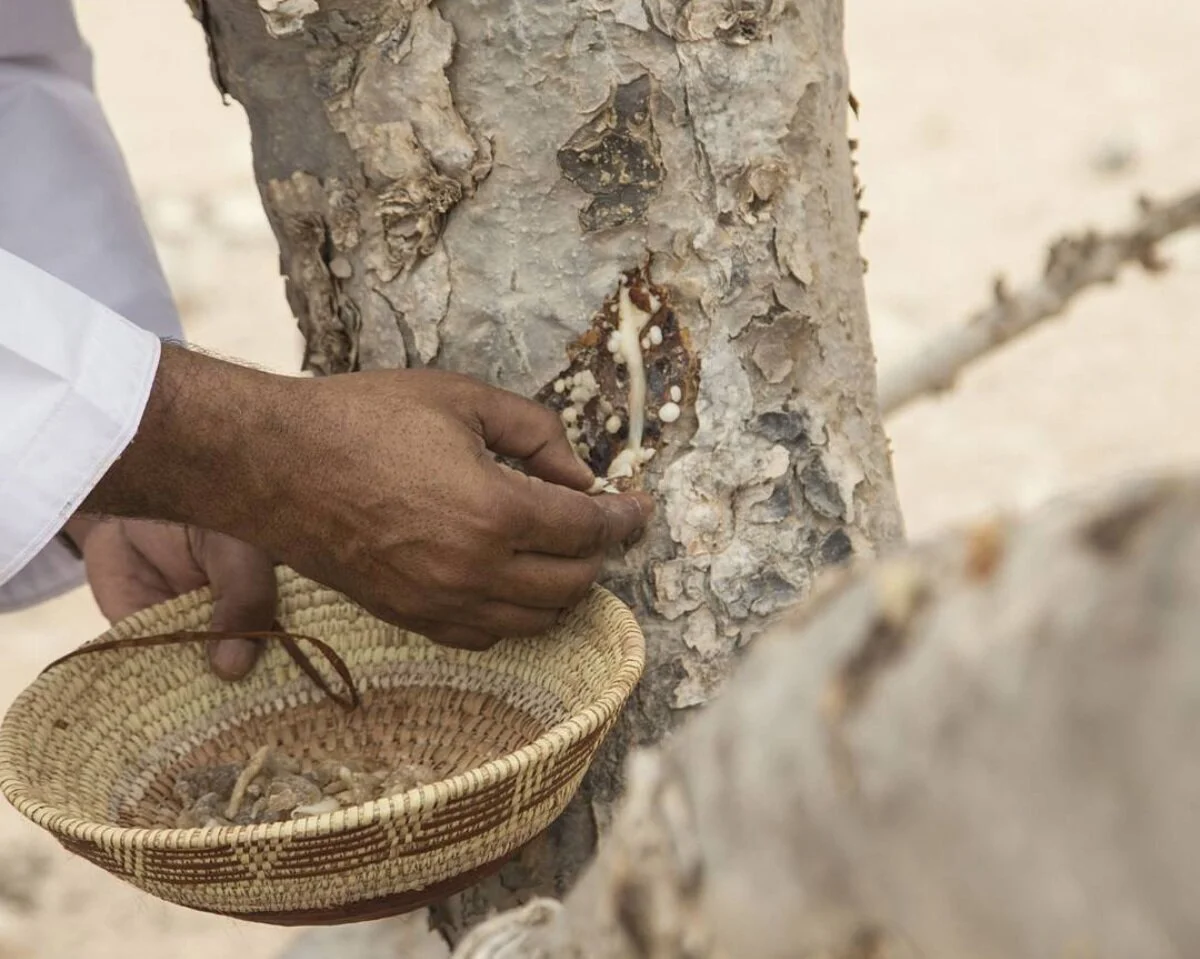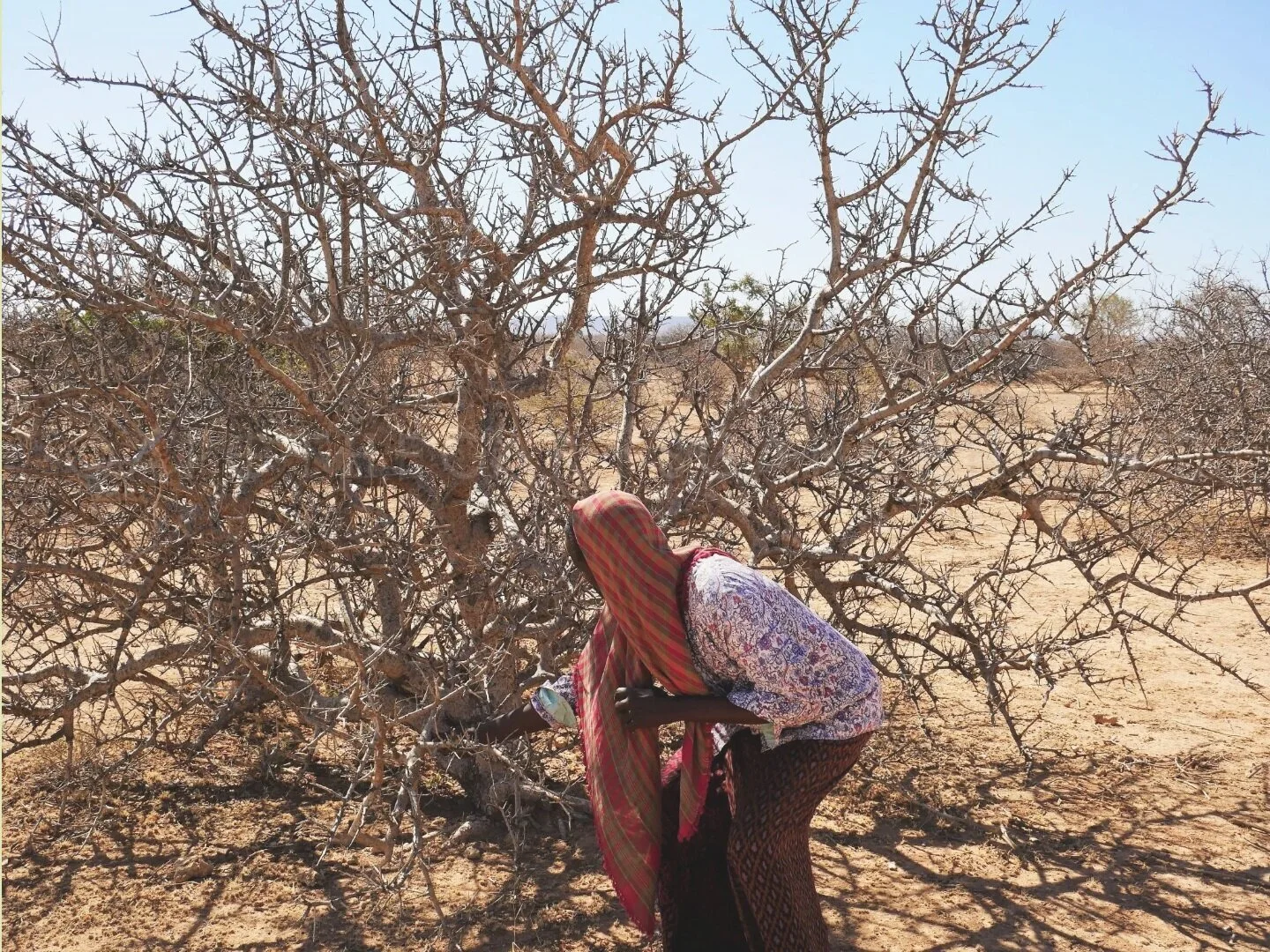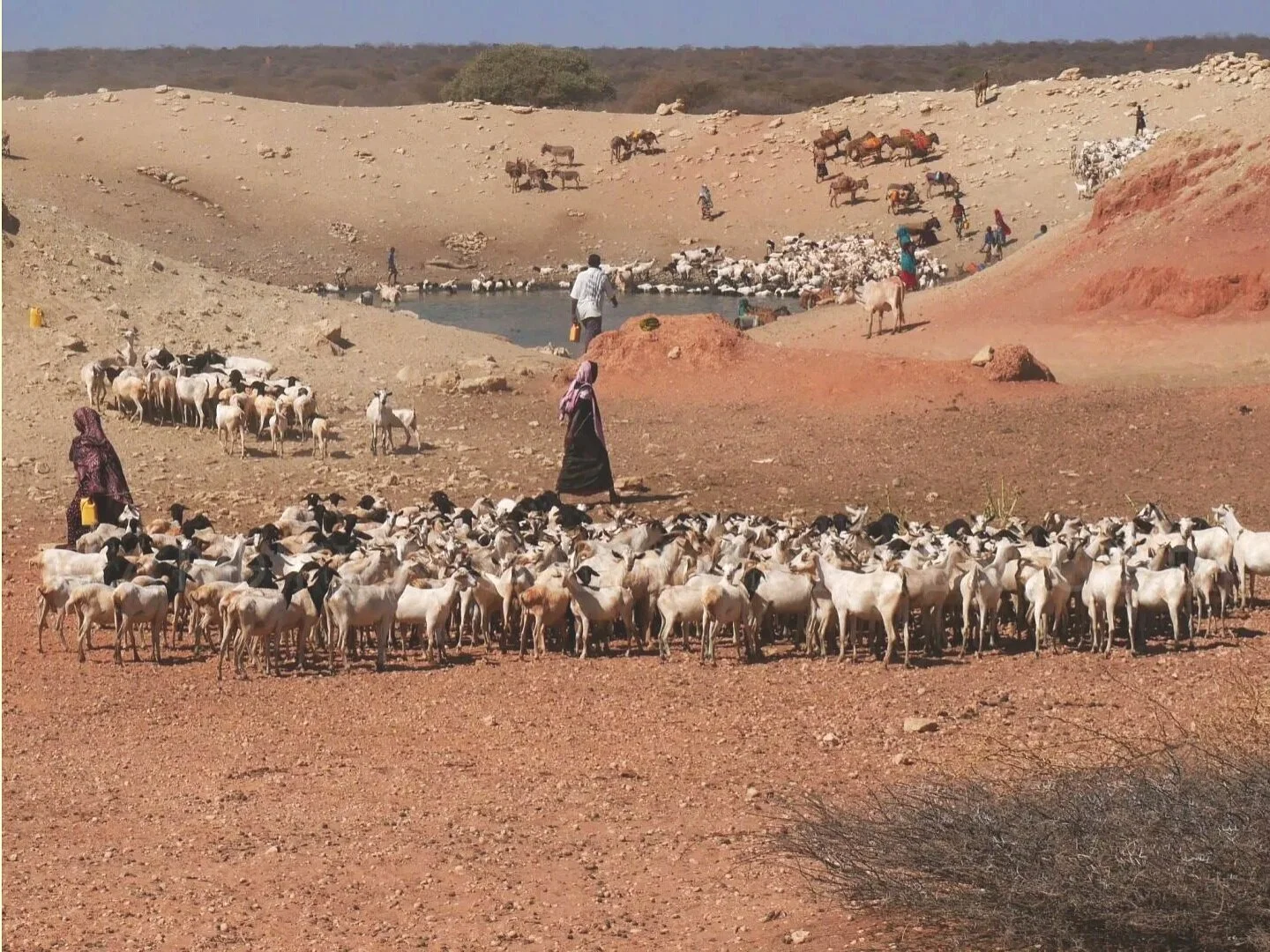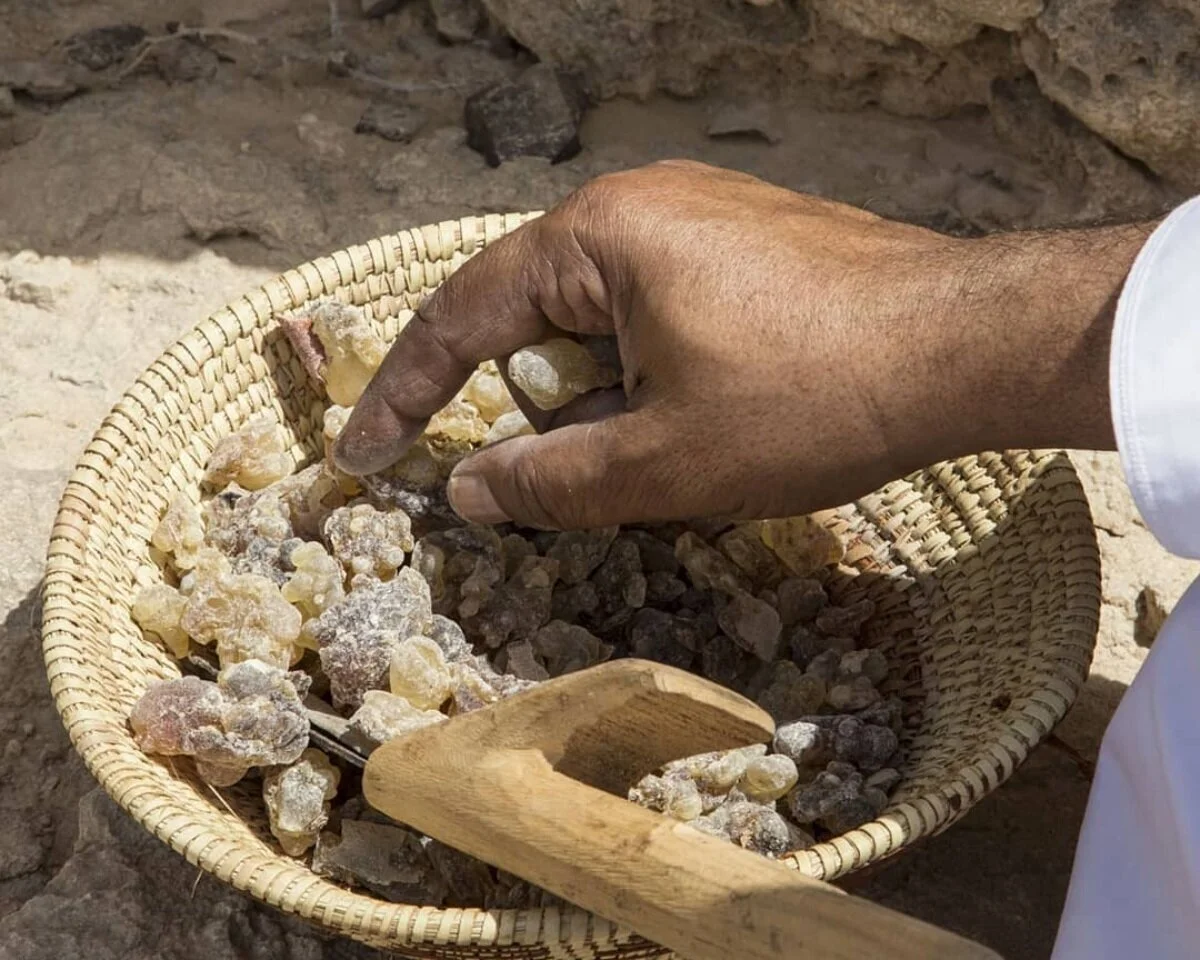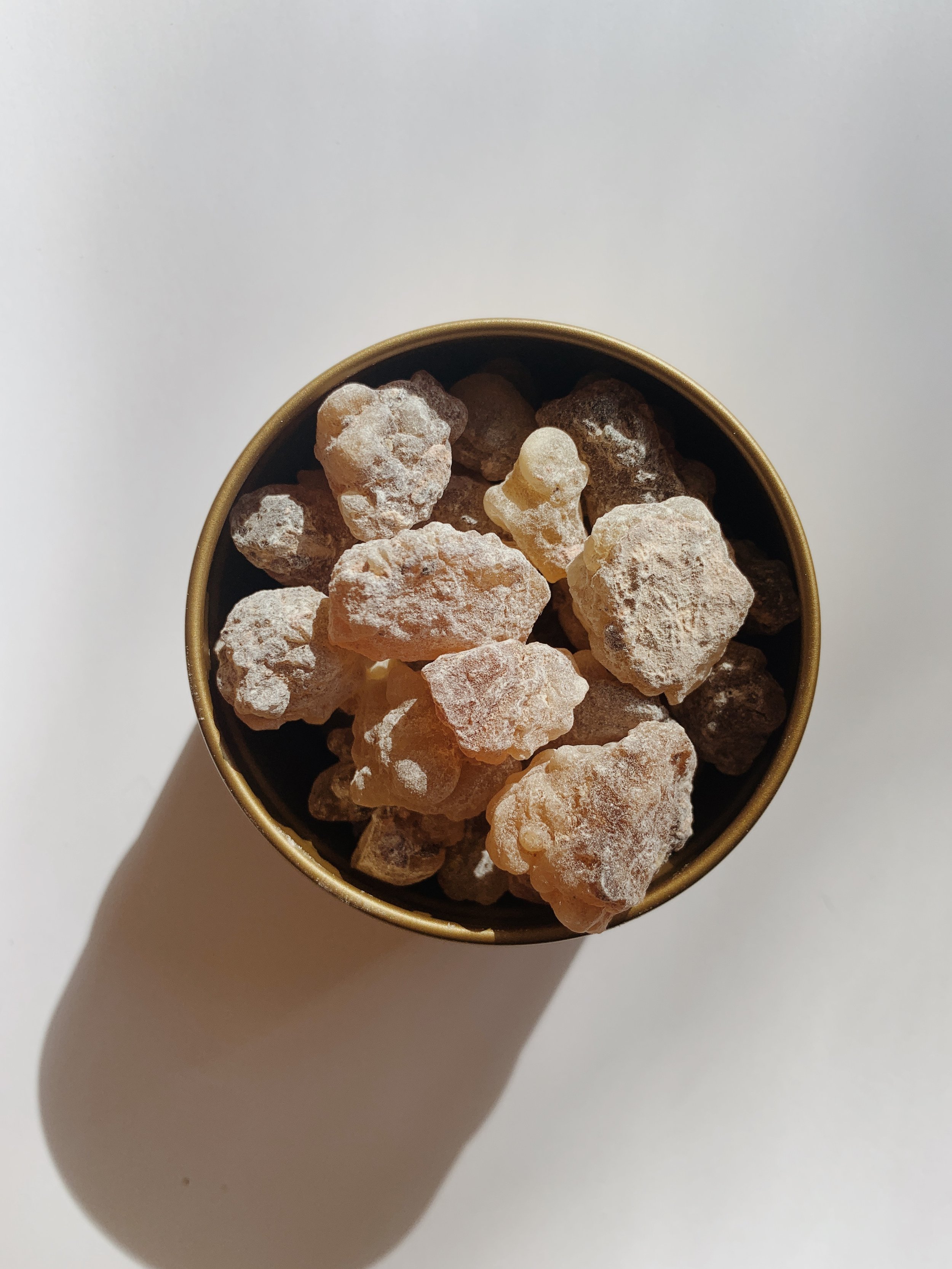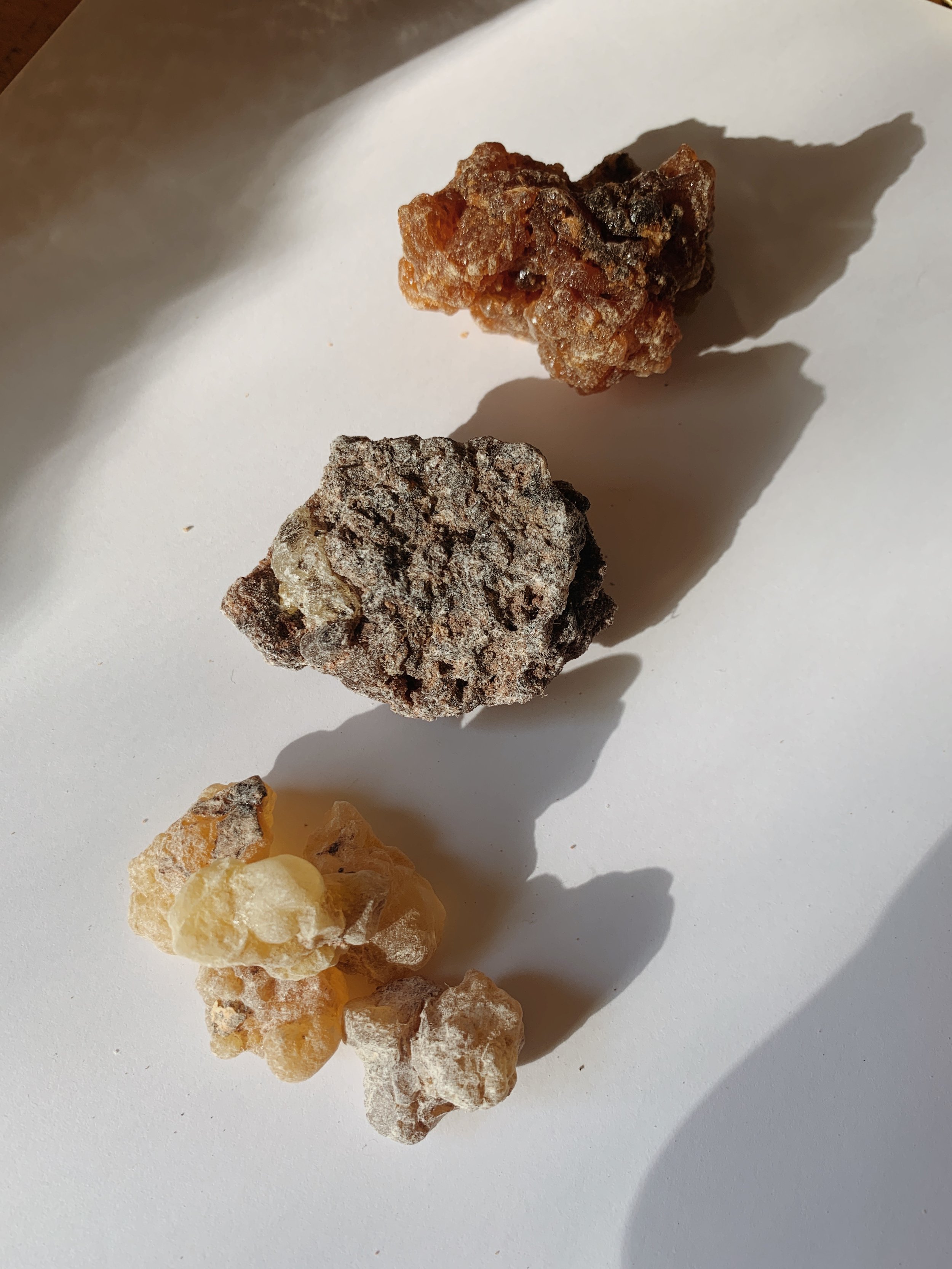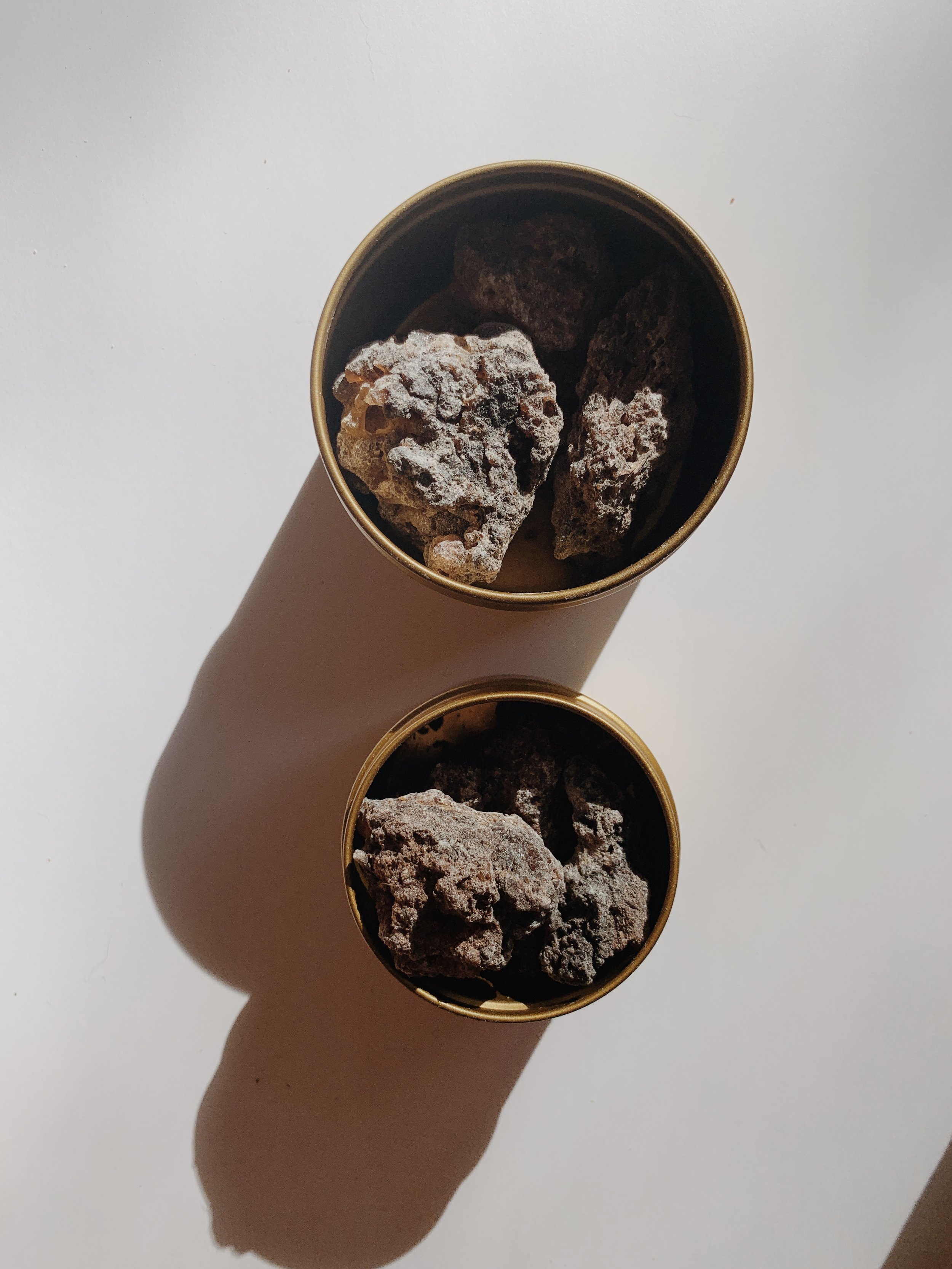ANCIENT FRANKINCENSE
The sacred resin of the Boswelia Tree + the Indigenous peoples of Somaliland.
Photo by Clement Jolin via Stories and Objects.
PLANT SPIRIT MEDICINE
Frankincense is a sap that comes from the ancient Boswellia Tree, which grows throughout East Africa, the Arabian Peninsula, and parts of India. This powerful + sacred resin has been used for thousands of years by cultures in Egypt, the Middle East, and Europe as medicine, in oils + balms, and burned for sacred smoke for healing, connecting, and clearing. It has been found in ancient Egyptian tombs and in Egyptian temples was used to honor RA, the Sun God. It is said that Cleopatra used it in her beauty rituals, in her oils and baths. When the mythical Phoenix rose from the ashes, it was said to have built a nest from Boswellia twigs and fed on frankincense tears. It is recorded in the bible as being one of the three gifts given when Jesus was born and was once more prized than gold. It is quite incredible to think that such ancient tools are still available to us today, that the resin we hold in our hands was once held by ancestors centuries ago. I love that about the plants, how they serve as a bridge to connect us to the lost worlds.
Frankincense is a high vibrational medicine that clears and uplifts the spirit. It connects us to the guiding energies of above as we connect to our sense of purpose. Frankincense is so beautiful burned while cleaning your space, uplifting the energy, and clearing away debris. The scent brings me back to other worlds, and within I feel a sense of connection and knowing, which allows me to move clearly and confidently in the direction of my dreams. I also feel a divine connection to my ancestors + to my roots in Lebanon. A sacred smoke to feed the spirits and connect.
Photo by DAN RIEGLER
THE INDIGENOUS PEOPLES OF SOMALI
Somalia + Somaliland in Ethiopia are the holders of the world’s largest Frankincense and Commiphora (Myrrh) “forest”, particularly the Sanaag region, where the trees are ancient and rooted deeply in the heart of the land and culture. It is from here where they have been supplying the Western world with it’s sacred resin for centuries. Cal Madow is a special mountain range in this area and the lushest part in the region, where the range gathers + precipitates the mists + clouds from the Red Sea and the Gulf of Aden. Among the special trees, rare animals + plants also grow here that are found nowhere else in the world. The indigenous people of the land here are all camel + goat herders that graze their animals among the abundant Boswellia + Commiphora trees while gently + sustainably collecting the resins from the trees and ground. The indigenous peoples that have lived amongst the wild Boswellia trees have tended to and foraged the resin generation after generation and have developed close cultural identities with the trees for centuries. The Frankincense and the Myrrh trees hold a special sociocultural status and are deeply woven in their hearts + traditions. Some Frankincense trees have even been preserved by some families and left untapped for decades to be passed down and given as a dowry. The trees are beloved to these families and vital to their survival. Our role as consumers of Frankincense in the Western world can either make or break these communities depending on how we choose to purchase this ancient resin …
Photo by DAN RIEGLER
THE ENDANGERMENT OF FRANKINCENSE
Frankincense is on the Endangered Species List and quickly on the path to extinction. Today, Frankincense is widely used as incense in sacred spaces, in cosmetics + perfumes, and in topical medicine for arthritis among other things. The essential oil is in high demand and growing by the day as the popularity of this medicine rises. Sadly, this has caused a severe decline in Boswellia trees and it is estimated we will lose them in the next 50 years. Currently, all Frankincense and Myrrh resin is harvested from wild trees. Due to the demands of Western consumers, there has been “an increase in over harvesting, harvesting from immature trees, improper tapping methods, and the decline in quality resin from stressed trees”.
Traditionally, the tree is tapped with a tool called a Mingaaf, with 6-8 cuts only, each summer, for two years, and then the tree rests for one year - so that it can heal and regain its health + strength. When a tree is “tapped” aka cut into, the tree’s immune system sends the sap to the surface to heal its wound. Now, many of the trees are cut continuously with machetes year-round, with up to 100 cuts, and without rest - due to the high demand for this sacred resin. This eventually causes less + low-quality resin and makes the trees vulnerable to be attacked by the longhorn beetle and pathogens that kill the tree completely. Over-harvesting in this way also reduces the germination rate of their seeds and they are unable to reproduce. Some other impacts hurting the trees are insects, wildfires, agricultural encroachment, collection for charcoal, and grazing. This is not only happening in Africa but with the trees in India as well.
Due to high demand in consumerism, Frankincense is exported by thousands of tons each year. Fashion blogs like the Zoe Report write “Frankincense is like liquid gold for your face” and list all of the high-end companies that use this sacred resin in their beauty products, but sadly none of these companies provide any hint of awareness of the endangerment of this resin, where they are getting their Frankincense from, and if they are following sustainable practices.
There is little being done to bring awareness to this issue, to reverse the trend, address the problems, or remedy the situation. This is a sad reality for this ancient tree and most importantly for the communities that depend on their harvest as their livelihood. “If the Frankincense trees are lost, the communities which depend on them will lose their ancient ties to the land, their cultural identity, history, and heritage. They will become displaced refugees, seeking new lives and livelihoods in the cities and towns.”
Photo by Clement Jolin via Stories and Objects.
WHAT CAN WE DO TO HELP?
Educate Others
Not many know of the endangerment of this beloved tree, the more of us that are aware, the more we can create change.
Consume with Awareness
Find Frankincense suppliers that are working directly with cooperatives + supporting the collector families directly. This provides support to their communities and ensures a market with fair and stable prices for the families as well as encourages them to continue to work with sustainable practices.
Before purchasing Frankincense resin or essential oil - do some research, ask the supplier or seller questions - Where does this resin come from? Is it ethically + sustainably sourced? If they are not 100% transparent or do not know, do not purchase.
Create change with your purchases. Support companies that are actively working to provide fair trade and sustainable products. “As individual consumers, it is up to us to put pressure on our suppliers to be part of the solution and not the problem.”
If buyers at all levels of the supply chain emphasize quality + sustainable harvesting over quantity, it reduces over-tapping and encourages the people of the land to work in harmony with the natural rhythms of the trees and provide eco-conscious offerings.
Lessen Consumption / Make Your Own Frankincense Oil
If you cannot find a company that is supporting cooperatives and sustainable practices, then I really encourage you to stop your consumption of Frankincense. Frankincense Essential Oil in particular uses so much material to make just a small bottle of oil. Instead, opt-in for making your own Frankincense oil by infusing the resin in a carrier oil of choice. The resin is so potent that you can infuse the same resin over and over again without needing to purchase more.
